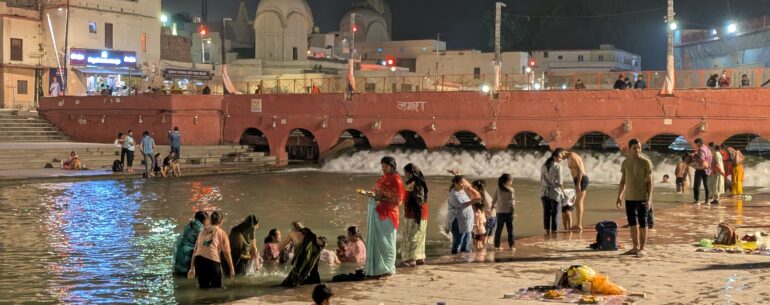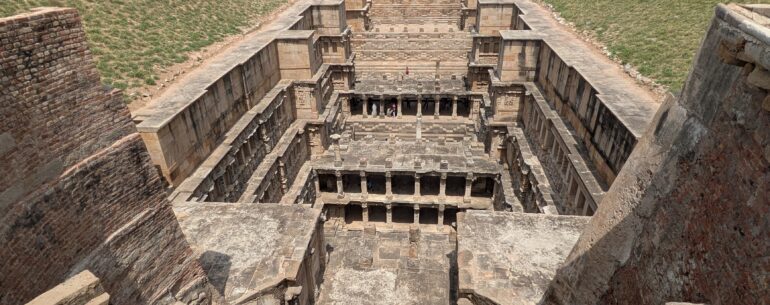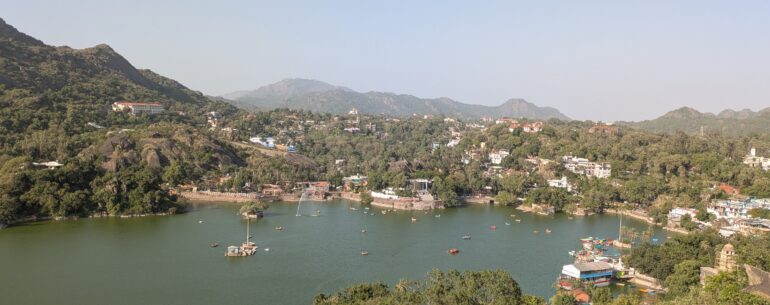As the birth place of Shri Ram, Ayodhya holds immense religious significance for many Hindus. While Ayodhya is believed to have been inhabited since 5th-6th century BCE(was called Saket earlier), it was only in the middle ages that it become identified with worship of Shri Ram. Ramayana itself is believed to have happened between 12,000 to 5,000 BCE but compiled in writing between 500-300 BCE. However, there appears to be no unanimity on these dates. For many historians, Ramayana remains a myth but obviously, a large number of Hindus, believe otherwise.
Whether Ramayana actually happened, and if so when, the fours yugas according to Hinduism as Ramayana is stated to have happened in Treta Yuga, the timelines for Ramayana and its composition – all make for some very interesting reading. Follow through the links below or just do an online search to access plenty more material available for reading. The only pre-requisite is to quieten the logical mind while you are reading. Do not try to think and draw logical conclusions, like millions of Indian devotees of Shri Ram for whom faith triumphs logic.
When did events of Ramayana and Mahabharat occur by Devdutt Pattanaik
Timeline of Ramayana, Medium.com
The four yugas, Rudraksha-Ratna.com
Staggering increase in visitors to Ayodhya in 2024
Ayodhya is believed to have become the no. 1 most visited place in the state of Uttar Pradesh, surpassing both Agra and Varanasi. And going by the numbers put out by the State Government, Ayodhya should easily be the most visited pilgrimage site in the world, even with yet to be fully completed Ram temple.
The actual number of visitors to both Varanasi and Ayodhya in the last couple of years, as per the Uttar Pradesh State Government, is quite staggering and almost unbelievable. With an estimated population of under 100k, Ayodhya is stated to have received over 160 million visitors in 2024, post the inauguaration of the Ram temple in January 2024. The numbers have been steadily increasing since the construction began in 2020. As a comparison, ~350k visited Ayodhya in 2019.
This is how the scene was near the entrance to Ram temple on February 6, 2025, the day I visited, between 4 and 6.30pm.
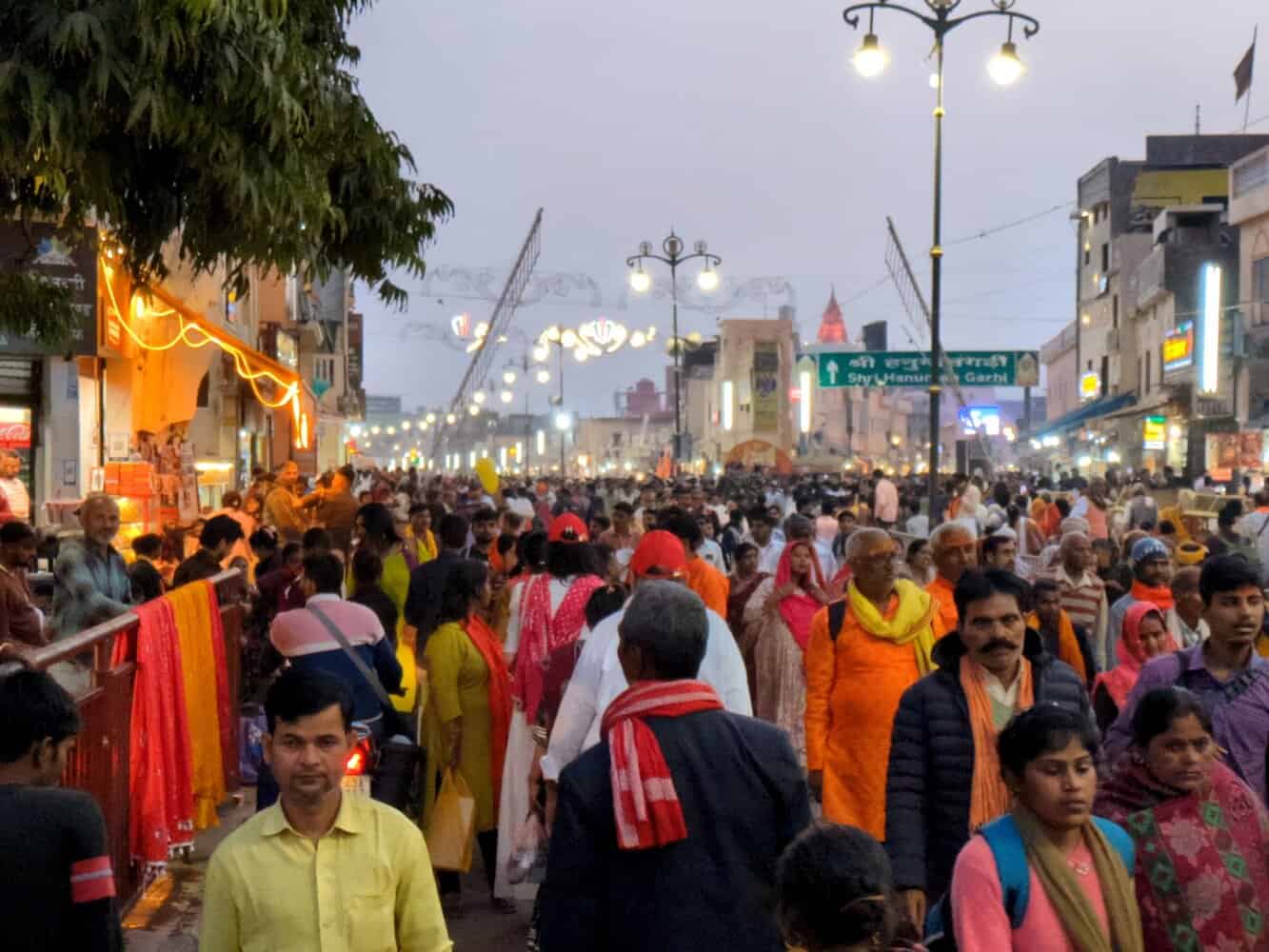
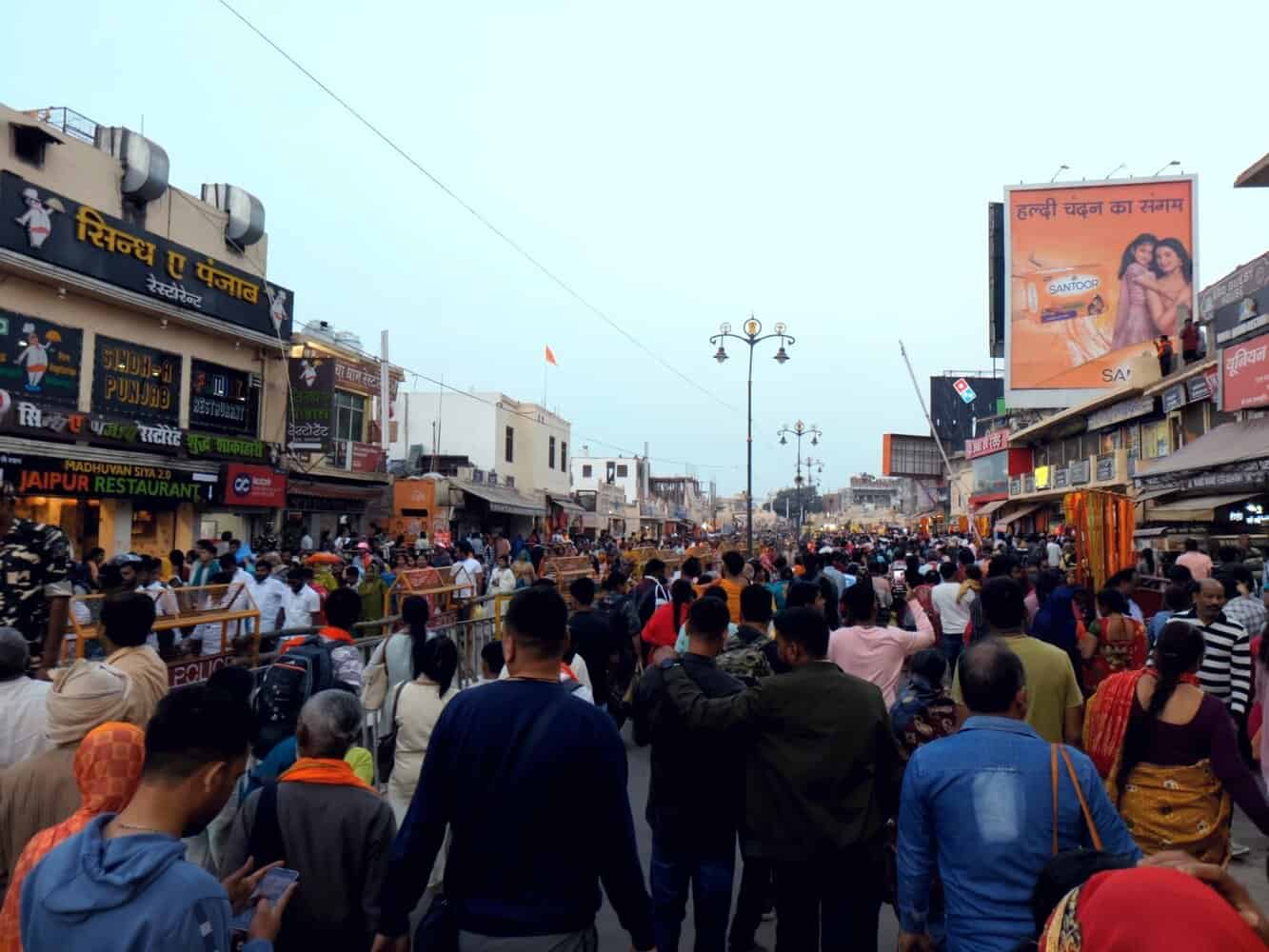
Ayodhya is still work in progress
But Ayodhya is still work in progress. As of February 2025 when I visited, there was fair bit of construction activity pending at Ram temple. The development of Saryu ghat and Saryu riverfront too was ongoing. None of the 5 star hotels supposed to come up are ready but few other newer hotels have opened. Homes are getting converted to home stays. But the larger town appears to have been left untouched as of now by the localized developments.
The new Ayodhya airport connects to several Indian cities
The new airport serving Ayodhya has direct flights to several Indian cities, including Bengaluru. It is located ~10kms away, close to National Highway. Lucknow is just about 2.5 hours away by road while Prayagraj is about 4 hours by road. One can fly to either of the two cities also.
Ayodhya is also well connected by rail with Vande Bharat running a daily service to Delhi. There is a daily direct train from Bengaluru as well but the journey takes 40 hours!
Key attractions in Ayodhya
Ram temple is undoubtedly the sole crowd puller as of now. The Saryu ghat with its evening Aarti and the Saryu riverfront will also possibly pull in crowds once the developmental work is complete. Ram ki Paidi near Saryu ghat looked quite impressive in the night. Hanuman Garhi is also visited by a large number of devotees but before the Ram temple, the numbers were negligible.
Ram temple
There is a fair bit of walk involved from the general entrance to the main temple inside the temple complex. Entry is free from the general entrance on Ayodhya Dham road and while there was some crowd when I visited around 3.45pm on a weekday, it was moving quick. In hindsight, the timing was good as the crowds increased by several notches after I had exited around 5pm. There is a large facility for depositing shoes. Locker facility is also available to deposit bags, mobile phones, smart digital watches and so on. List of what is not allowed is available but clarify if needed. Otherwise, you will be forced to return from the security check point.
Darshan lasted a few seconds
As is the case with most of the famous temples in India, the ‘darshan’ of Ram Lalla lasted a few seconds. The security does not allow you to hang around. The idol is definitely very very attractive, almost real life like. The carvings on the main temple too are very intricate and beautiful.
Overall, it took me little more than an hour from entry to exit. This will obviously change once the temple is fully complete. Wash room facilities are available inside the temple complex.
Wheelchairs available at INR 150
Wheelchairs are available at the general entrance for senior citizens and others on a need basis. The queue for the wheelchairs was quite long when I visited.
As soon as I exited, I was accosted by plenty of hawkers, many of them children, outside the main entrance trying to sell a variety of souvenirs and other stuff. As usual, the police kept chasing them away as they tended to slow down the movement of visitors exiting the temple.
Confusion about the location of entry gate
There were traffic restrictions in place when I visited as the number of visitors had ballooned due to ongoing Maha Kumbh Mela at Prayagraj. My auto dropped me close to a gate that accepted only passes. I did not have one(and it was not being sold locally) and so I was directed to another gate close to Sita’s Rasoi. From here I was directed to yet another gate which also accepted only passes. There were quite a few smaller temples and other ancient structures on the way. I was literally forced to enter one of these smaller temples that housed ‘Ram Paduka’, listen to the story narrated by a priest and offer ‘dakshina’ before I could escape!
What was curious was that hardly any one was able to articulate where the main entrance to the temple was. Luckily a volunteer with a wheel chair agreed to guide us to the main entrance on Ayodhya Dham road for a fee. I walked through Ayodhya’s crowded streets with both sides bustling with shops and then beside a very long queue outside the entrance to Hanuman Garhi temple before touching Ayodhaya Dham road and reaching the main entrance to the Ram temple.
As per reports, there will be 6 entry gates once the temple is fully ready. Good to have clarity on which gate to use as the temple complex is spread over an area of 2.7 acres. I walked around for about 45 minutes before meeting the volunteer and it was another 35 minutes before I reached the main entrance. I am still wondering why I did not open google maps on my phone!
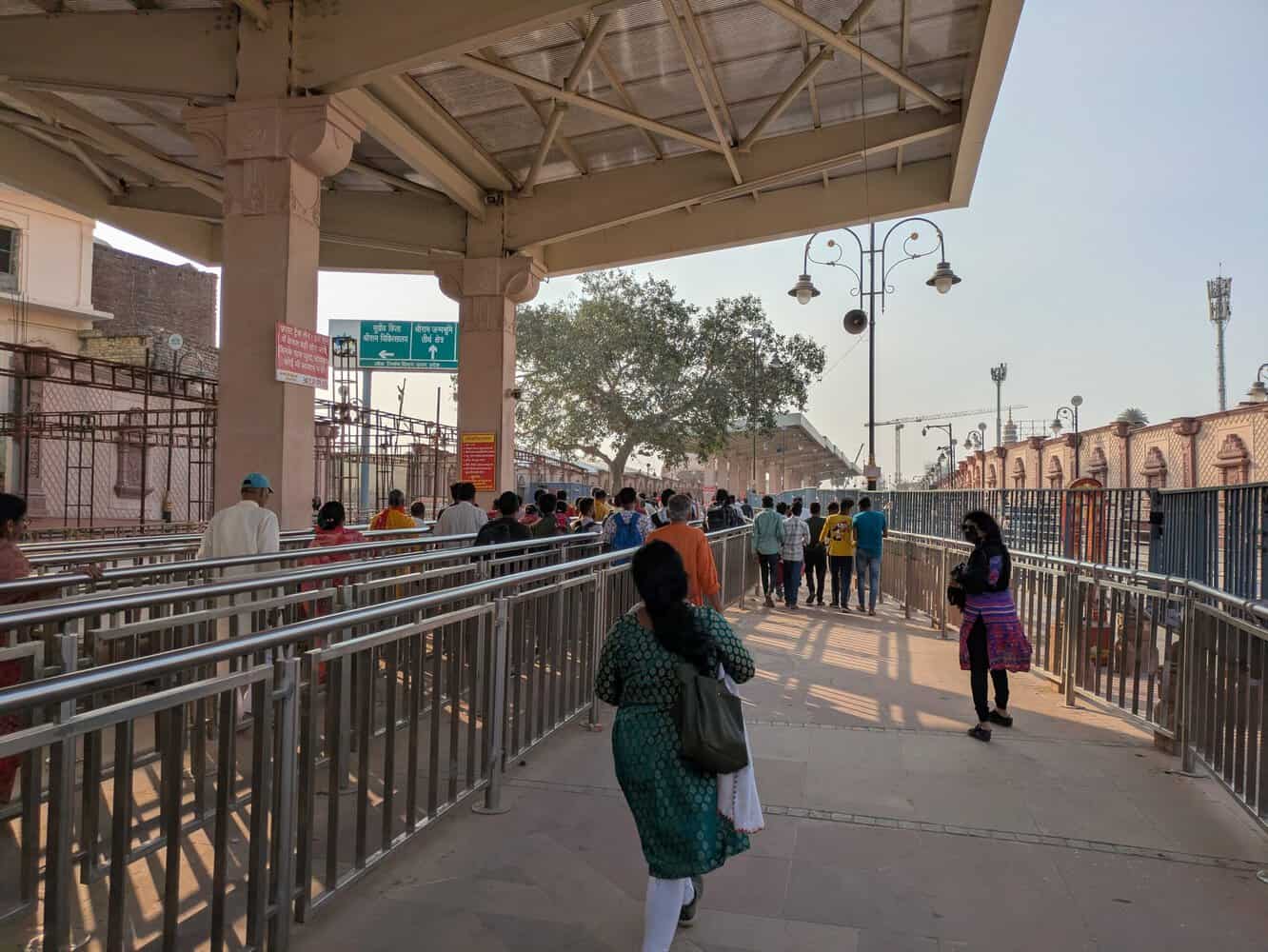
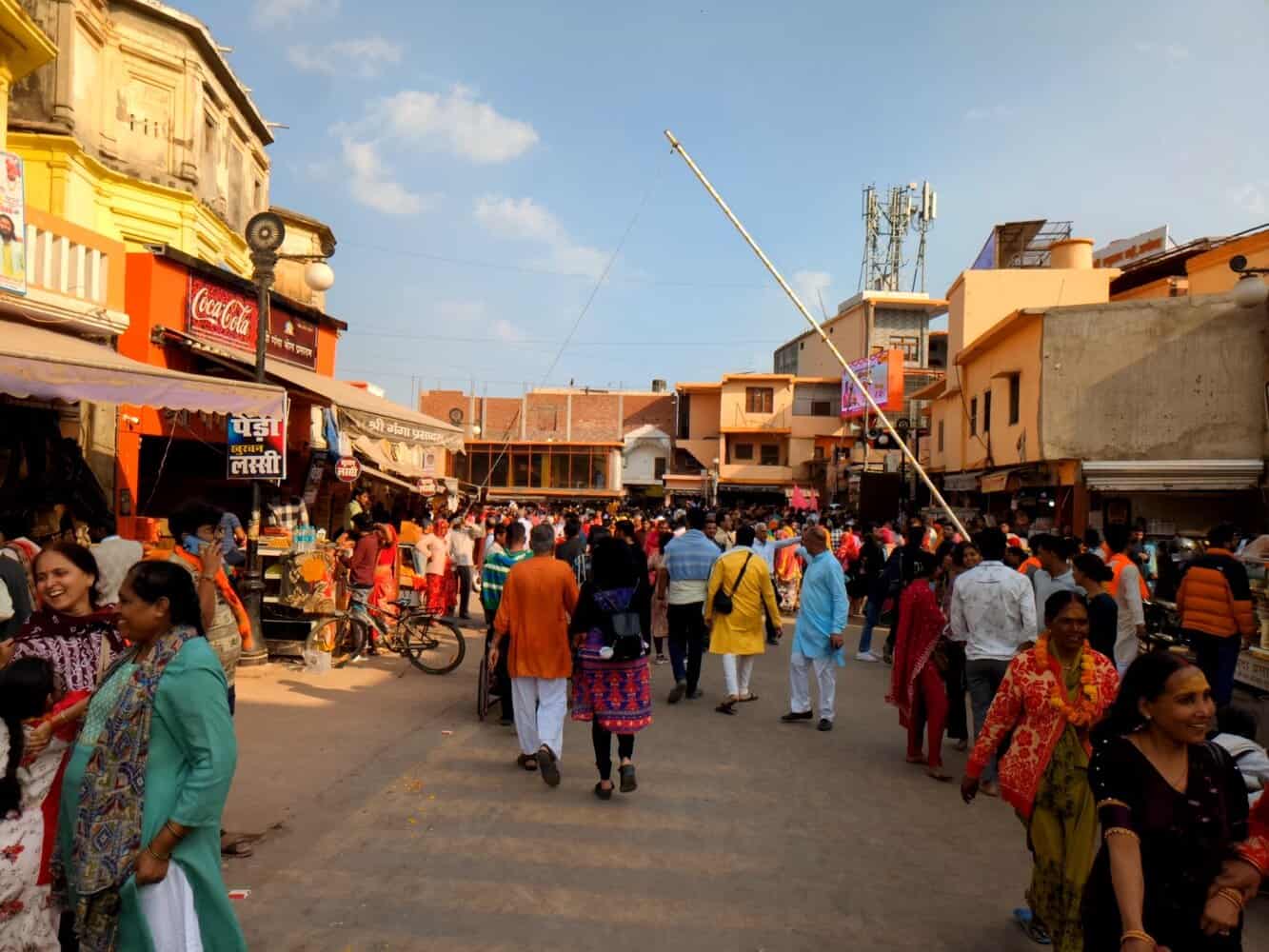
Book free passes online
One can procure free passes online for both Aarti and Darshan. Slots are available for booking up to 15 days ahead and each day is split into time slots of 2 hours. Tatkal pass can also be booked for the day, subject to availability. There are separate entrances meant for only pass holders and this can reduce the time for darshan during busy periods. Book as early as possible as slots get filled up in no time.
During my visit, online bookings were discontinued due to the heavy rush of devotees on account of Maha Kumbh Mela.
Here is the link to the official portal for more details and booking.
There is a guidance for the devotees to wear traditional Indian attire but this is not enforced.
Hanuman Garhi temple
The temple is believed to have been built in the 10th century and many devotees, offer prayers at Hanuman Garhi before visiting Ram temple. I had to skip this temple on account of the long queue.
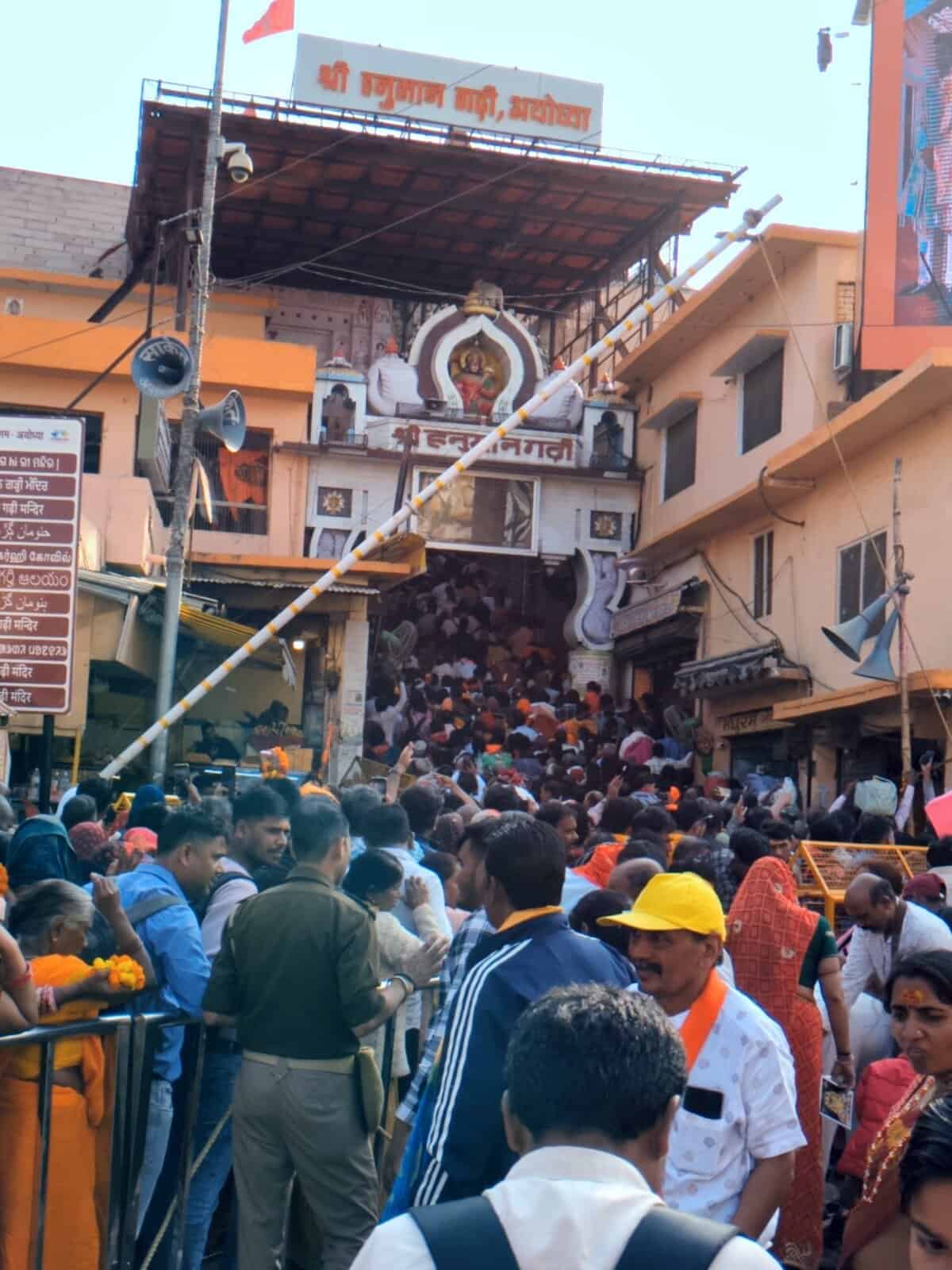
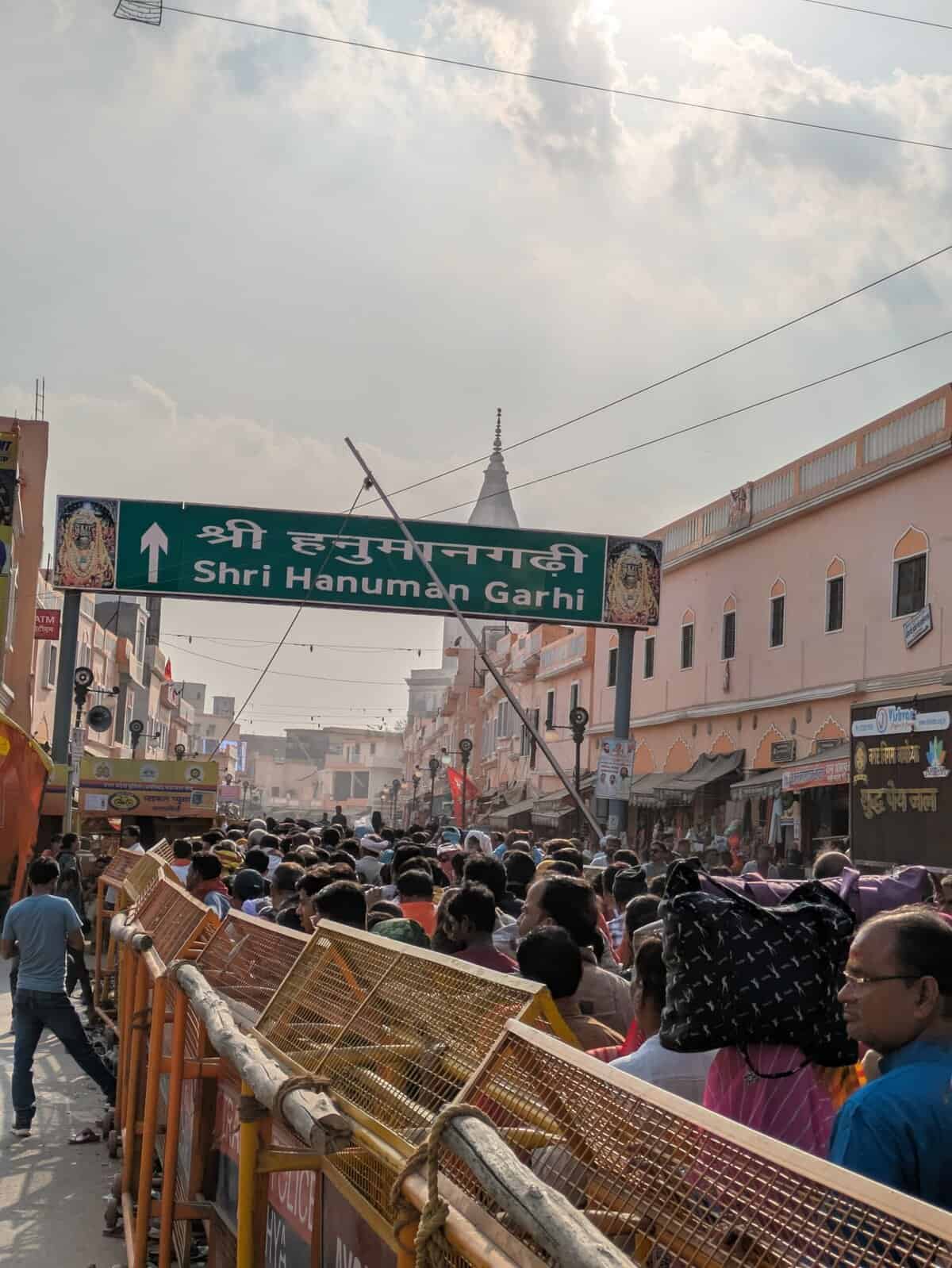
Saryu ghat and Saryu riverfront
I witnessed the Aarti that is held at Saryu ghat every evening. To me, it appeared no different from the Ganga Aarti that I witnessed in Varanasi. Both Saryu ghat and Saryu riverfront are still under development. It looked like the mural walls here will be depicting stories from the Ramayana. If it turns out to be similar to the mahakal corridor in Ujjain, it is likely the riverfront will become very attractive to visitors. While the Saryu river is considered sacred, the water did not look very clean to me.
Ram ki Paidi(sacred ghat) is located next to Saryu ghat and it looked pretty impressive at night.
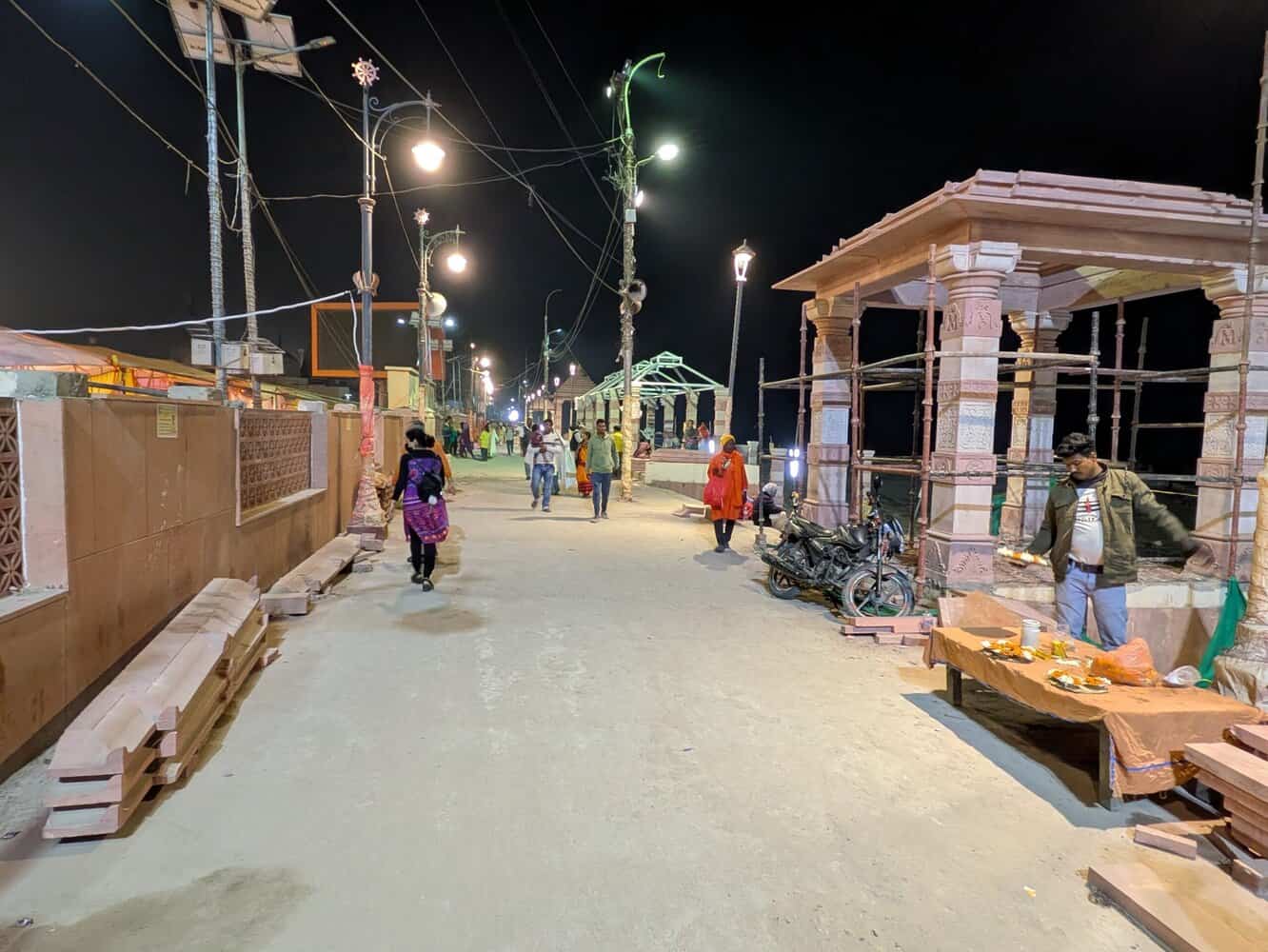
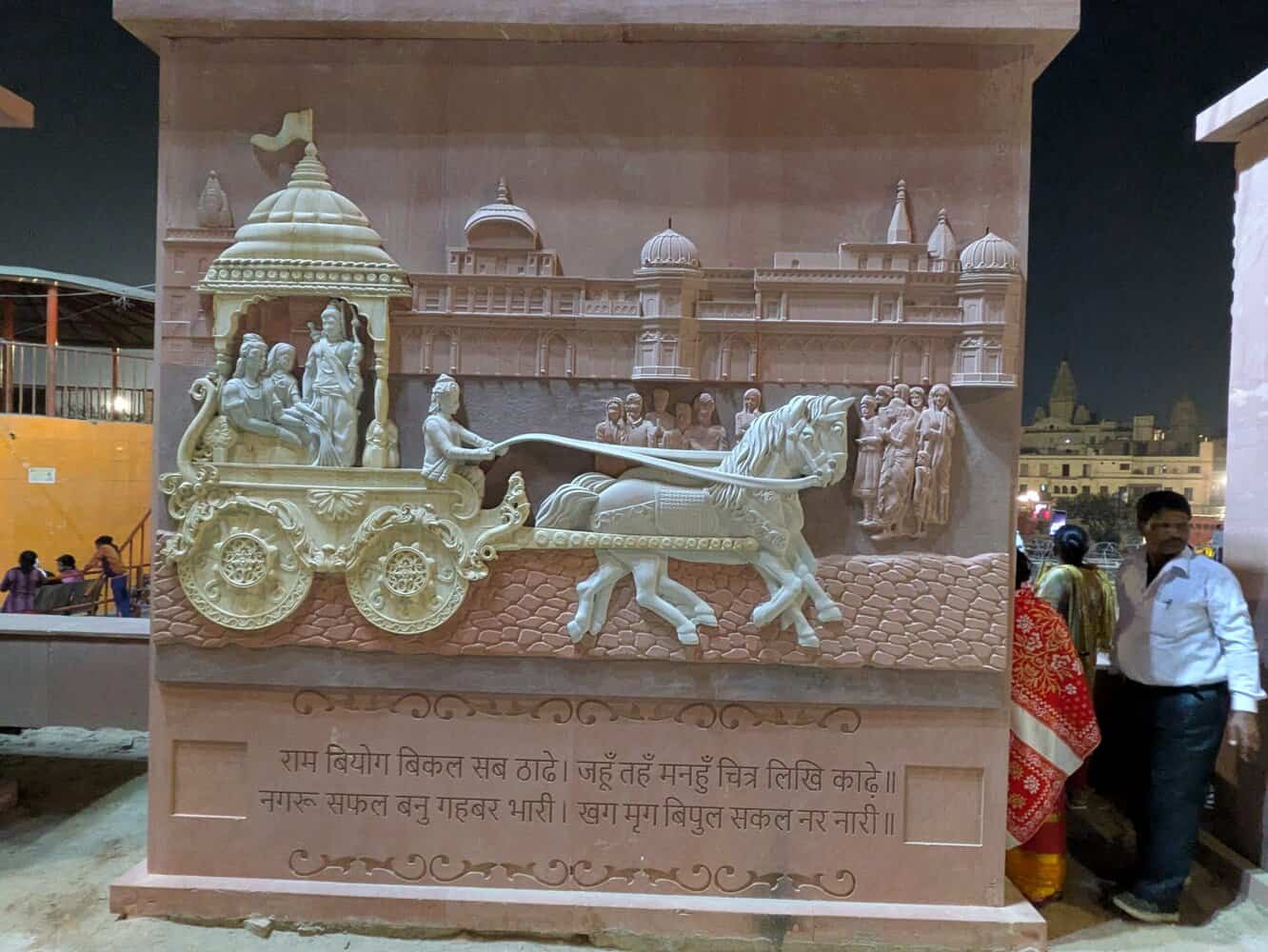
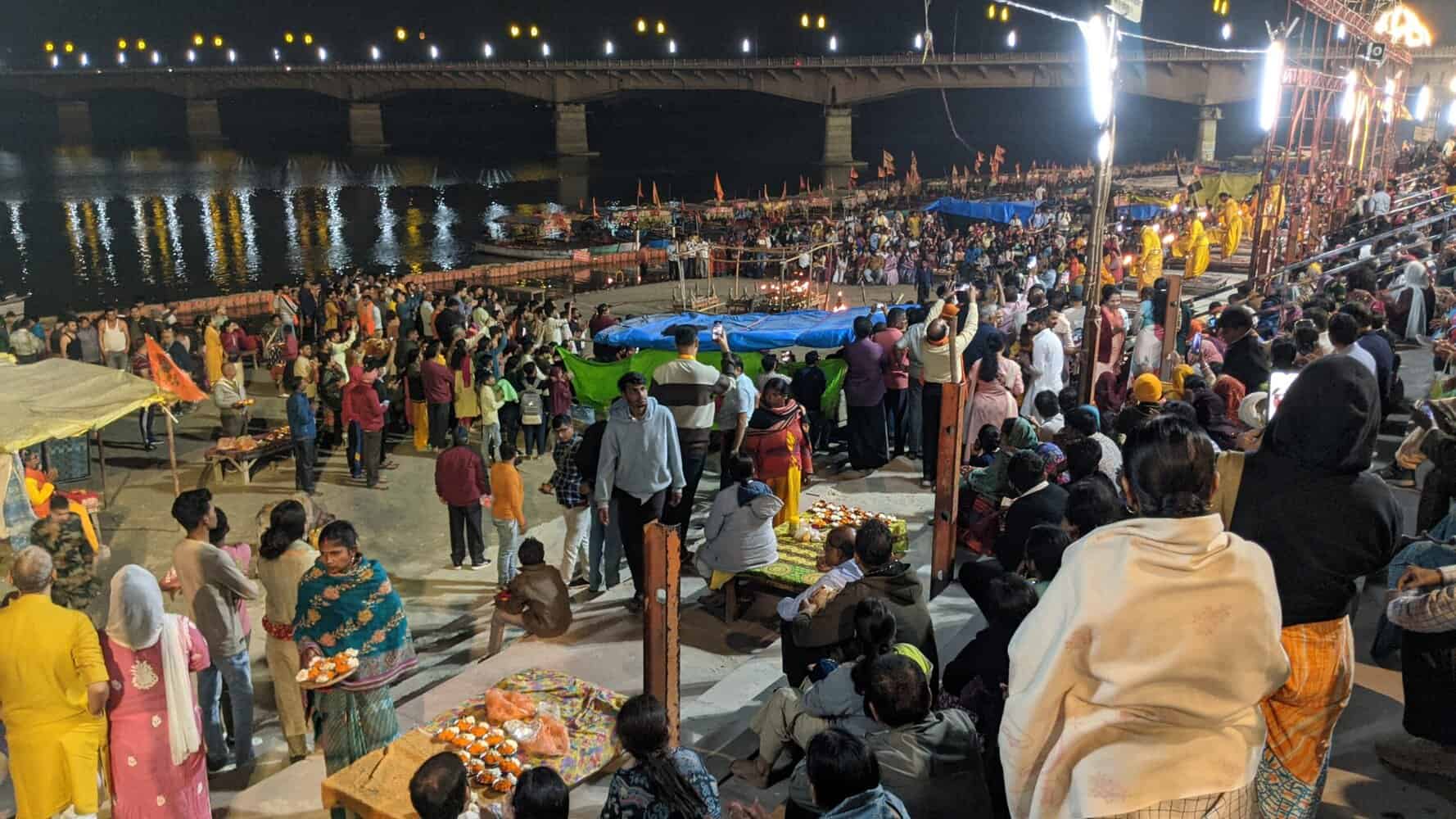

What else?
There are plenty of other temples and ancient structures in Ayodhya and all have some history. A local guide may possibly make the visit more interesting. I guess most devotees connect whatever they know about Ramayana with these sites and hence their interest levels are high. The town itself is not impressive though. Few other attractions include Kanaka Bhavan, Dashrath Mahal, and Nageshwarnath Temple. Maybe Gulab Bari(tomb of Shuja-ud-daula) as well but that is closer to Faizabad than Ayodhya.
Some of the websites even list Sita ki Rasoi and Lakshman Kila as attractions. I visited both and there is absolutely nothing to see or admire. Ram ki Paidi is nice but in need for a touch up. Don’t get carried away by the beautiful pictures that most portals display about Ayodhya. But it is also true that a run down structure looks far more attractive in a picture than in reality.
Ayodhya can actually become a very attractive town to visit if the key ancient structures and buildings are given a make over.


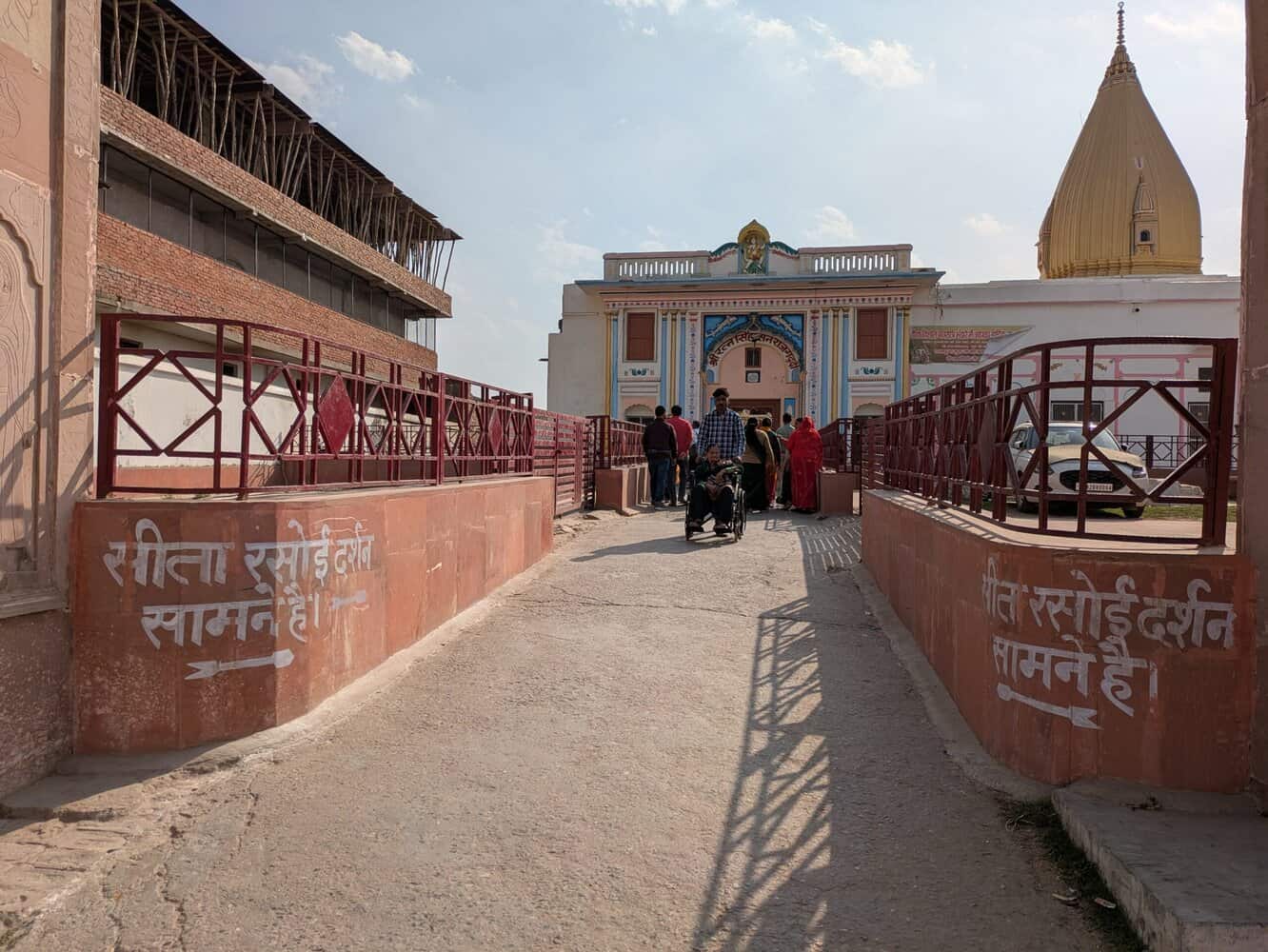
Best time to visit Ayodhya
November to February(and to some extent October and March) is the best time as the weather is most pleasant. Summers are quite hot with temperatures often topping 45°c while the rainfall can be heavy during monsoon season.
I visited in February when the day was warm and night fairly cool.
Being a religious town, Ayodhya comes alive during Dussehra, Diwali and Ram Navami, all of which may not necessary fall during the 4 months of winter.
My visit coincided with the Maha Kumbh Mela and many visitors, including me, combined a visit to Prayagraj with Ayodhya and Varanasi. There was so much of crowd in Ayodhya that the traffic police closed several roads to motorized traffic, allowing only pedestrians. This included the Ayodhya Dham road that led to the main entrance to Ram temple. If this happens during major festivals, one should be prepared for long walks.
Where to stay?
Ayodhya offers plenty of budget hotels and homestays but very few branded hotels. The better hotels are closer to Faizabad and mostly located on the route from airport to Ayodhya.
I stayed in a newly built hotel called Raghukul Sadan in Deokali. The rooms were very spacious and food quite ok. No other amenities though but that does not matter as Ayodhya is not a destination for longer stays. One night is good enough. Ram temple was about 5 kms away and the journey time was about 15-20 minutes by 2 autos.
Commuting does not take much time and hence there is no real need to stay within the boundaries of Ayodhya town.
Commuting in Ayodhya
E-Auto is the best option. Rates are fixed and actually low but E-Autos going near the Ram temple charged a big premium over normal fares. If the roads are kept open to traffic, taxis could also be an option.
Only vegetarian food is available
Only vegetarian food is available in Ayodhya. There are few decent standalone restaurants including couple of them on the Ayodhya Dham road very close to the main temple entrance. Ayodhaya is stated to famous for certain traditional street food but due to the heavy crowd, I chose not to move around to taste some of these local specialities. Near the Ram temple also, there were quite a few small outlets selling varieties of laddoos and chats. But given that the area was dusty, I was not inclined to give it a try.
This article from Conde Nast describes the street food of Ayodhya.
Better to visit Ayodhya once development is complete
When I visited the Ram temple in February, a portion of the main temple that houses the idol of Ram Lalla was open to public, and even that was not 100% complete. Lot of work from the entry gate till the main temple was in progress, resulting in the surroundings being a bit dusty with uncleared debris in several places. Given the nature of development works at Ujjain or Varanasi, there is no doubt the entire complex of Ram temple upon completion would be grand. As also the Saryu ghat and the riverfront.
I think it would be best to visit Ayodhya only after completion of development work. Hopefully, some of the other ancient structures would also be given a make over.
Ayodhya is not a leisure destination
Ayodhya is not a destination for leisure travel as of now. May be it will turn out to be one after all the development work is complete. If you do not have any religious beliefs, there is possibly no reason to visit Ayodhya. For now.
